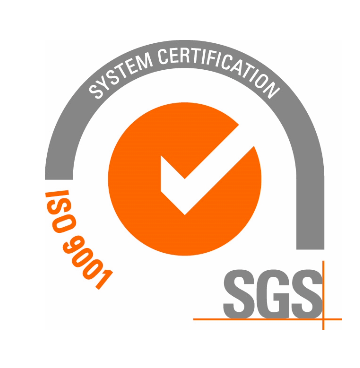Launching a web store? Struggling to choose between Shopify and Magento? Grab some popcorn as we put these popular eCommerce platforms to the test.

Thinking of starting an eCommerce business? We have some good news for you.
It's never been easier.
Nowadays, there are plenty of eCommerce platforms on the market, and they all share a common goal: to make it easy to launch and maintain an online store.
You don't need to be (or hire) a genius-level web developer. These platforms handle all the complicated stuff – product management, security, payments – so you don't have to.
But every silver lining has a cloud. Sure, there are plenty of platforms to pick from, but this abundance of choice just makes it harder to determine which is right for you.
Analysis paralysis strikes again.
Don't worry. We're going to try to make things a little simpler. In this post, we take a look at two of the most popular eCommerce platforms – Magento and Shopify – and pit them against each other.
Let's just make one thing clear, though: we're not going to hold up one platform as the outright winner. This is a nuanced subject, and each platform has its pros and cons.
That's why we've broken things down into distinct categories. We'll look at cost, add-ons and ease of use, so you can make the best choice based on your individual needs.
With that said, let's meet our combatants.
What is Shopify?
Shopify is a Canadian company founded in 2006, known for its eCommerce platform of the same name. SimilarTech
ranks it as the second most popular platform across the entire web, after WooCommerce.
According to the same source, Shopify is the number one eCommerce platform among the top 10,000 websites worldwide.
What is Magento?
Magento is an eCommerce platform originally launched by Varien Inc. in 2007. Unlike Shopify, Magento is open-source software.
SimilarTech ranks Magento as the seventh most popular eCommerce platform overall.
Shopify vs Magento: how easy are they to use?
Our first category has a clear winner. Shopify is leaps and bounds ahead of Magento for ease of use.
This is hardly surprising, because Shopify is simple by design. With its drag-and-drop website builder and code-free customisations, the platform aims to make eCommerce easy for anyone. It's kind of Shopify's
thing.
Magento, on the other hand, has a learning curve that would give K2 a run for its money. Unless you're a coding whizz, you'll need to hire a web developer to help out. (That, or invest a heap of time into learning PHP.)
The trade-off is flexibility. While both platforms offer pre-built themes with a little out-of-the-box customisation, only Magento lets you get under the hood and tweak to your heart's content.
Conclusion:
choose Shopify if you want "click, click, done" convenience. Go for Magento if you have big ideas and the coding skills to pull them off.
Shopify vs Magento: how much do they cost?
At first glance, we have another cut-and-dry winner. Magento is free –
in theory.
In practice, it's a little more complicated. As an open-source platform, Magento is free to install. However, you'll have to pay for web hosting and a domain.
Domain registration is easy enough. Just visit your favourite registrar and choose a nifty name. You'll usually pay between £7 and £12 per year for the privilege.
Hosting can be trickier. Only a few hosting providers support Magento, and they each have their own individual pricing plans.
Complicated, right? Again, Shopify makes things a whole lot simpler.
With Shopify, you pay a monthly subscription fee, which covers hosting, support and your use of the platform. At the time of writing, the prices are £19 for a basic plan, £49 for the standard plan and £259 for the advanced plan.
You can also purchase a domain through Shopify, or settle for its free "myshopify.com" domain.
One more thing. We need to talk about transaction fees.
Shopify has its own payment system and charges no additional transaction fees if this is used. However, if you use an alternative payment gateway, you'll have to pay a little extra – on top of what the gateway already charges.
Magento, on the other hand, charges no transaction fees – you only pay the standard fees of your payment gateway.
Conclusion:
it's complicated. Magento
might
be cheaper, depending on your choice of hosting provider. Shopify at least keeps things simple with its subscription model.
Shopify vs Magento: how good are their add-ons and integrations?
To get the most from your eCommerce platform, you'll probably want to improve its functionality with a few juicy add-ons.
These can range from apps – such as email marketing tools and social sharing buttons – to integrations that let your platform work seamlessly with other software applications.
Integrations are particularly important if you're planning to use a third-party
fulfilment centre. By integrating your platform with their warehouse management system (WMS), you'll ensure that they can pick, pack and dispatch as soon as a customer places an order.
(By the way,
we're
a fulfilment provider, and our WMS works beautifully with both Shopify and Magento. Ahem. That's all.)
So let's cut straight to the quick. Shopify and Magento both have awesome app stores that make it easy to supercharge your online offering.
The Shopify App Store currently hosts more than 7,000 add-ons – both free and paid – that run the gamut from marketing, to merchandising, to the purely aesthetic.
Magento's Marketplace is a little less mature. Users can choose from more than 3,000 active extensions, which cover a similar range to Shopify's offering.
In general, Shopify's add-ons are a little easier to use. Magento's, like the platform itself, tend to require a little coding knowledge if you want to make the most of them.
Conclusion:
Shopify offers more choice and a sleeker experience. But you'll hardly be disappointed with Magento's offering, either.
Thanks for reading! We hope we've helped you make the right decision for your new business. While you're here, why not learn a little more about our
eCommerce fulfilment integrations?
All Rights Reserved | Stowsafe Fulfilment














